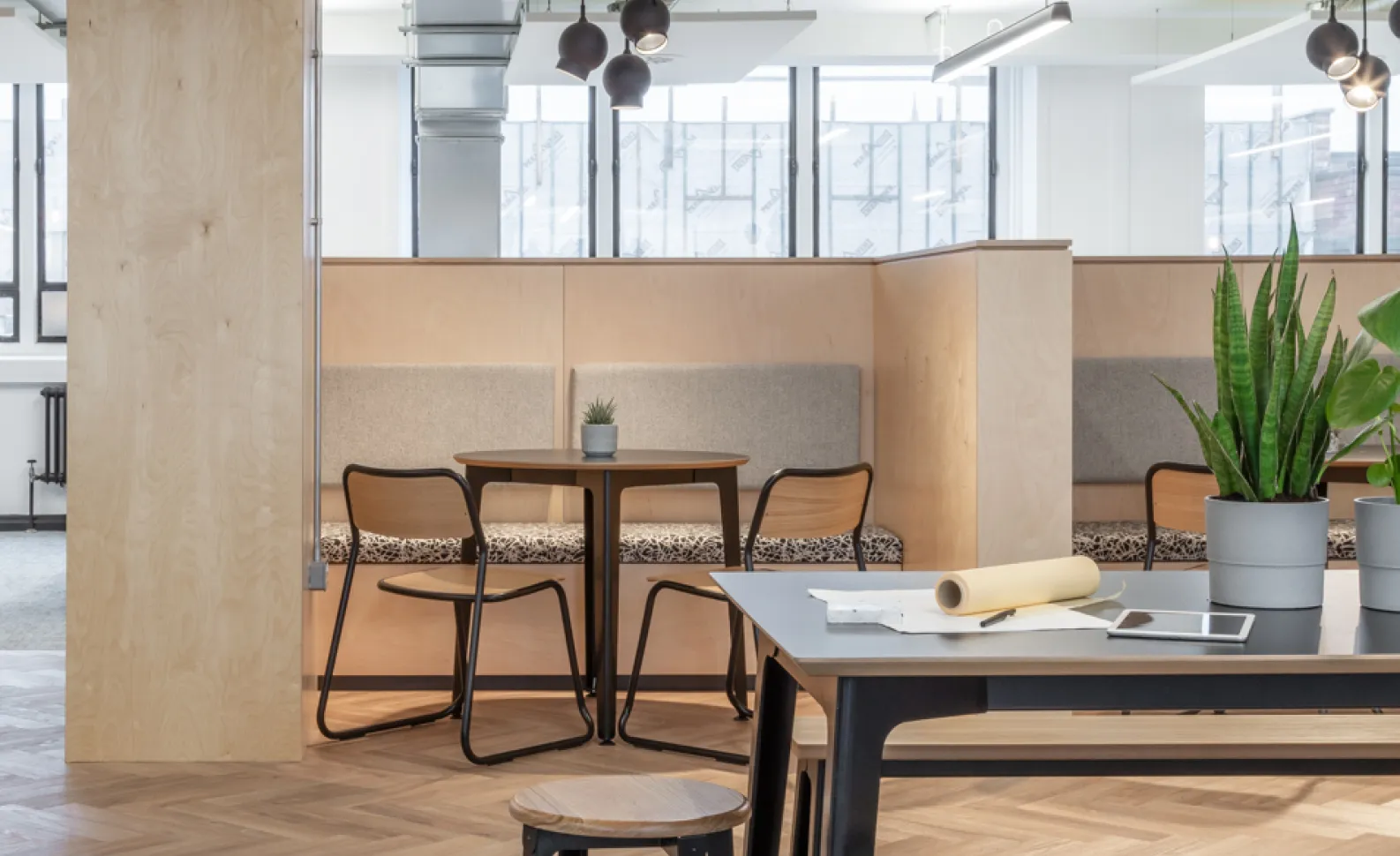Insight
Designing workplaces around the needs of the modern workforce
22 Jan 2025

Lewis Field
Senior Interior Designer
Last year more than 40 percent of UK companies were back in the office full-time, and with this number likely to rise, one thing is clear: yesterday’s office spaces won’t meet today’s needs.
At Pick Everard, we addressed this by redesigning our headquarters to better suit our team’s needs and work styles. Below, our senior interior designer, Lewis Field, explains how other businesses can follow suit to create workplaces that inspire, support, and adapt to the diverse ways we work.
Biophilic Design
Biophilic design has become one of the most talked-about trends in interior design, with Google searches for the term surging in 2024.
At its core, biophilic design connects us with nature, enhancing productivity and well-being. However, it's more than just placing a few plants in the corner of a room.
Biophilic design must engage multiple senses to maximize its benefits and can be achieved by integrating:
- green walls and plants
- natural light
- earthy colour palettes
- organic textures
- subtle nature sounds
These elements work together to create a calming environment where employees feel more relaxed and focused.
Project Example
A recent project where we incorporated biophilia was Nottingham Trent University’s Postgraduate Centre, which required an ‘office feel’ so that students could embed themselves comfortably into professional working environments.
The redesigned reception area and communal spaces of the multi-million-pound refurbishment were specifically designed to integrate planting.
From the bespoke storage solution located behind reception which guides the eye up to the existing atrium, to the café area greenery-filled partitions. Planting features heavily within the project not only to act as a practical screening solution but also to create an environment that promotes wellbeing and productivity.
Materiality was also extremely important within the project with a SKA silver rating achieved via the use of products with a high recycled content. These products centered around our design which heavily focused on timber and stone elements both of which relate to the natural environment and further look to bring the outside world into the interior scheme.
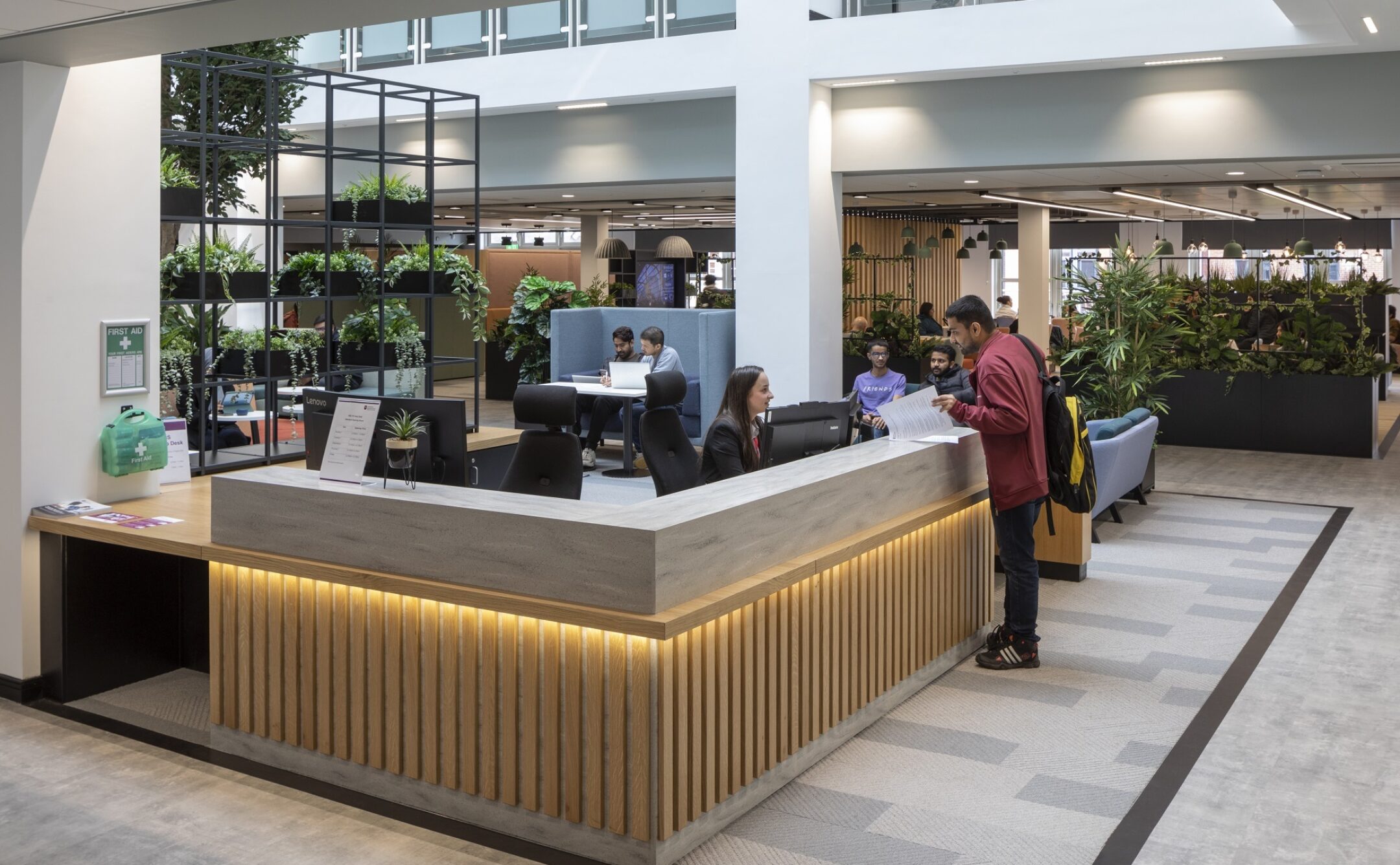
Sustainability
Sustainability has moved from a "nice to have" to a "must-have" in workplace design. With businesses under increasing pressure to reduce their environmental impact, clients are prioritising materials and systems that align with their sustainability goals.
Smart building technology is playing a key role, using automated systems and AI to optimise energy usage, monitor indoor air quality and adjust lighting or temperature based on occupancy.
This year we expect greater emphasis on recovering and reusing materials and technologies; increased focus on natural, energy-efficient, responsive lighting; more refurbished and repurposed furniture; and lean, modular layouts. As designers, it’s our responsibility to guide clients in making choices that not only protect the planet but also create healthier working environments for their teams.
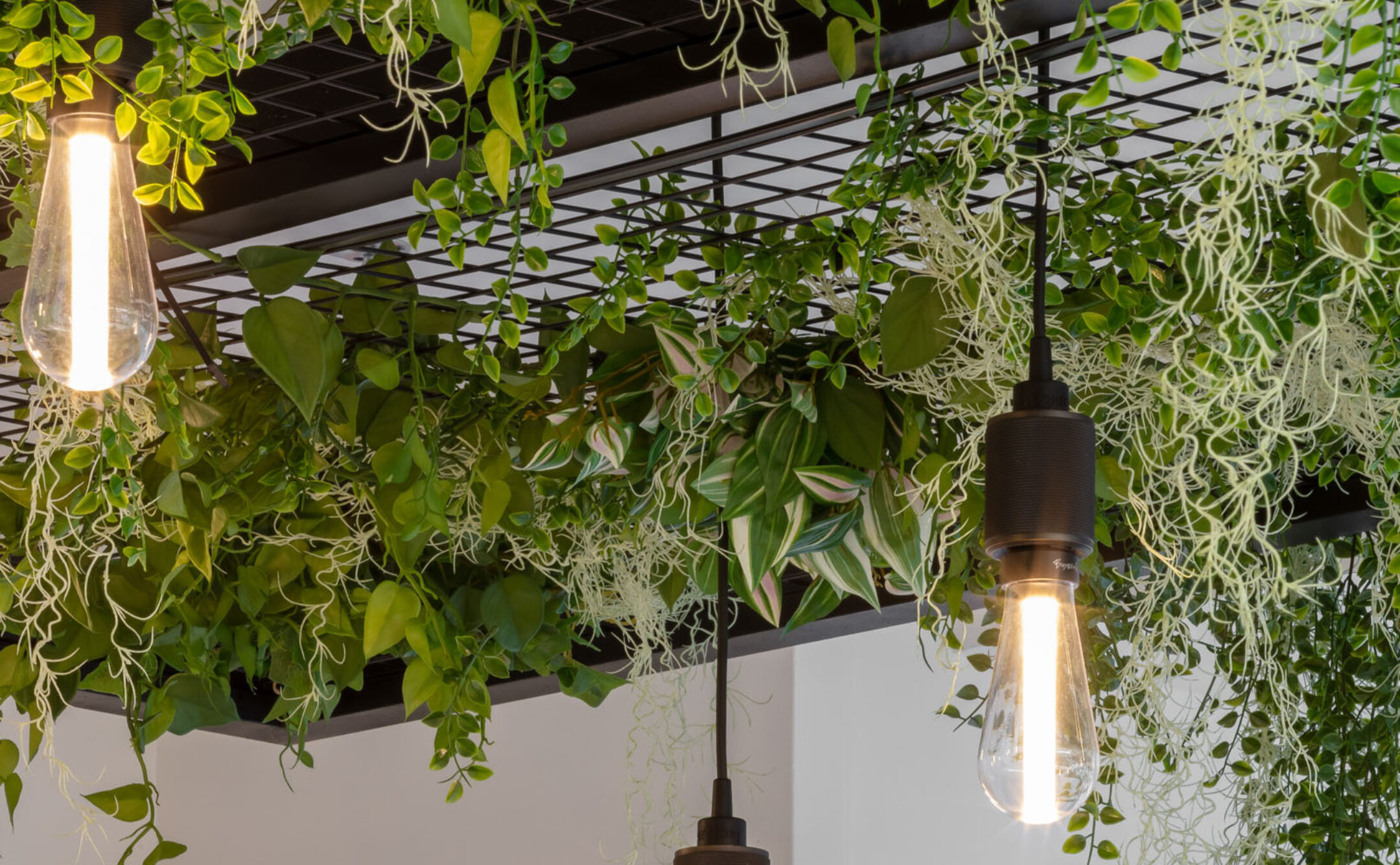
Inclusivity
A workplace can only succeed if it’s accessible to everyone. With 24 percent of the UK population living with a physical disability, inclusivity is no longer optional—it’s essential.
This means creating spaces that are easy to navigate, designing beautiful but useable bespoke furniture and considering the placement of handles and switches.
But physical accessibility is only one part of the equation. Around 15–20 percent of the global population are neurodivergent, including those with autism, ADHD, or dyslexia. For these employees, sensory distractions like harsh strip lighting and excessive background noise can be a significant barrier.
To address this, businesses should consider quieter zones, adaptable workspaces, and lighting that can be dimmed or adjusted. Workspaces must be able to respond to and accommodate a broader spectrum of human behaviours, ensuring they remain inviting, productive, and enjoyable for everyone.
Cultural and gender inclusivity are equally as important. Thoughtful design choices such as gender-neutral bathrooms, dedicated prayer rooms, and mothers’ rooms/wellness spaces for new mums create a more inclusive and welcoming environment.
Project Example
Our design team worked with Cheshire West and Chester Council to deliver a brand-new office building that reflects modern ways of working while prioritising inclusivity. The design introduced agile workspaces, drop-down meeting areas, and a hot-desking policy to encourage collaboration across teams.
Additionally, the office featured quieter zones and accessible layouts to cater to a broad range of needs. These features ensured the office space was not only functional but also welcoming for all users, from staff to members of the public.
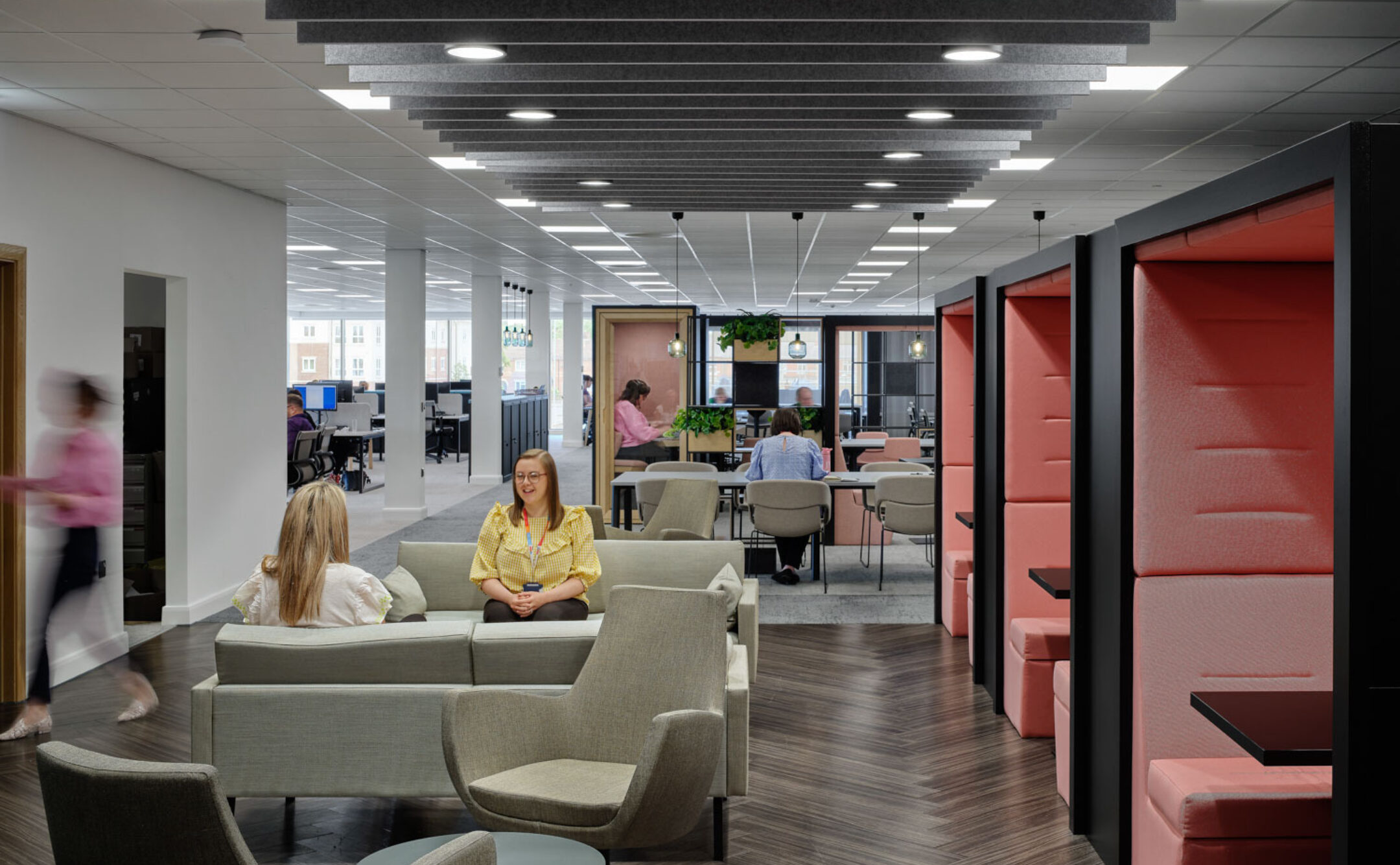
Adaptability
The way we work is constantly changing, and so should our offices. Flexible, multi-purpose spaces; modular layouts; and the ability to change our working environments in response to more extreme and unpredictable climatic conditions, will all be key trends in 2025. Offices that can adapt quickly to different tasks or team sizes will remain competitive, especially as businesses juggle hybrid and in-office working models.
From collaborative breakout areas to quiet focus zones, modern workplaces should cater to a wide spectrum of working styles. Adaptability isn’t just about physical space; it’s about embracing change and designing environments that grow with the people who use them.
Project Example
The refurbishment of our headquarters in Leicester, at Halford House, highlights the importance of adaptability in modern office design. The project converted a traditional office layout into a flexible, multi-functional workspace. By incorporating modular layouts and versatile breakout areas, the design accommodates a variety of working styles.
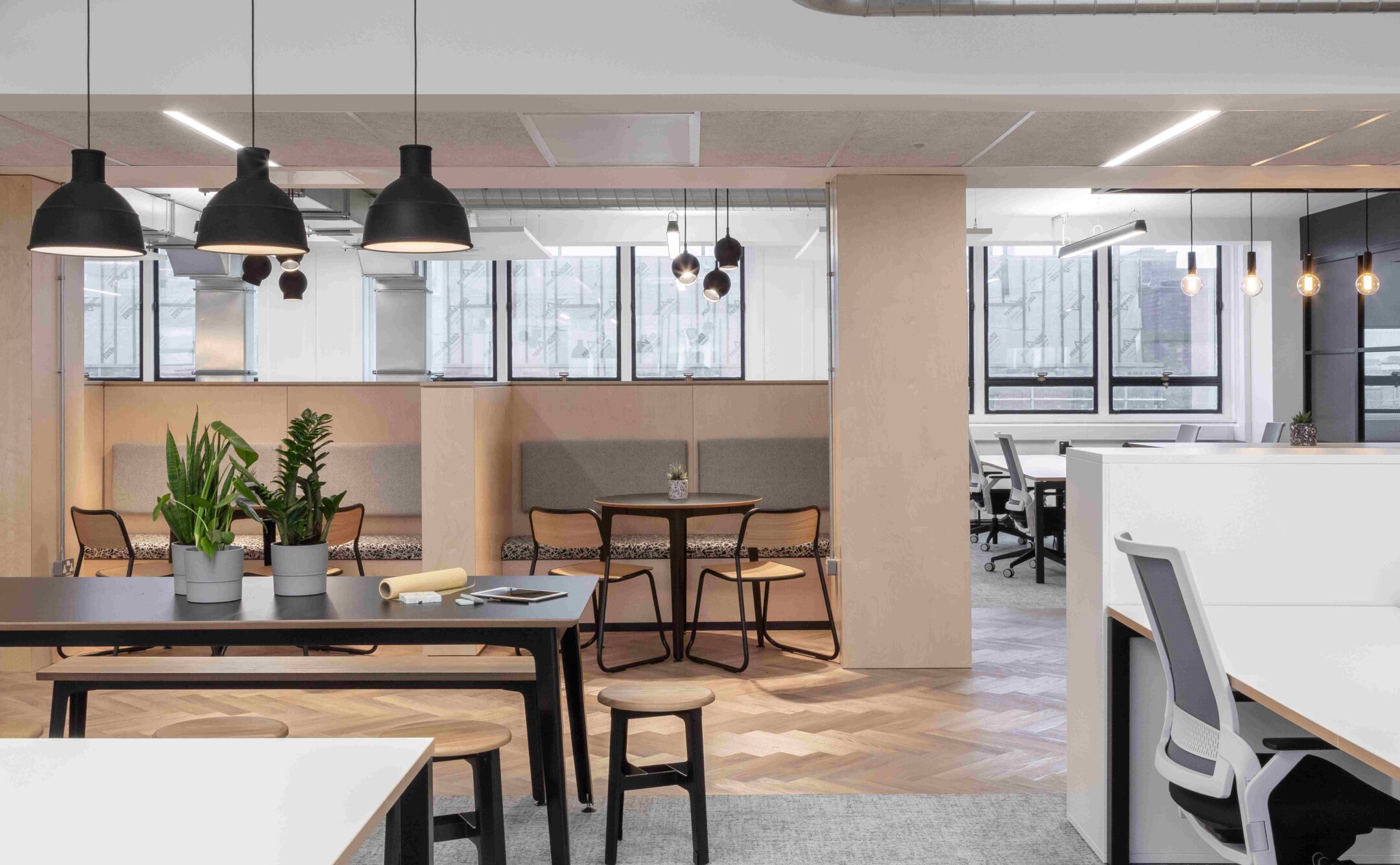
The Future Workplace
The future of office design goes beyond aesthetics—it’s about creating spaces that inspire, connect, and support employees whilst reflecting the values of sustainability and inclusivity. As more businesses prepare for a full return to the office, thoughtful design will play a crucial role in shaping environments where employees want to work—not just where they have to.
At Pick Everard, we’re helping clients navigate these changes, ensuring workplaces meet the demands of 2025 and beyond. By focusing on biophilic design, sustainability, inclusivity, and adaptability, we can create offices that truly deliver better together.
Workplace
From concept to completion, we work with public and private sector clients to deliver new build and quality refurbishment workplace projects.
